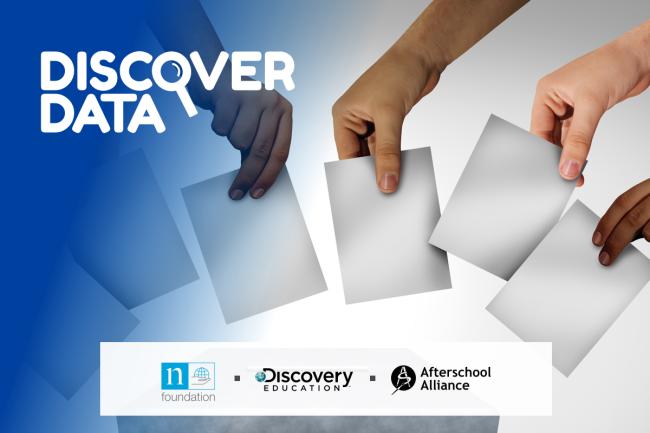Empowering Students to Use Data in Understanding Equity and Justice
That’s why it’s important for students to understand the power of data. Discover Data – an education initiative powered by the Nielsen Foundation in collaboration with Discovery Education and the Afterschool Alliance – provides no-cost dynamic digital resources for educators, students, and families to innovate the future through data.
Integrating data science in the digital classroom is effective when lessons focus on relatable and real-world applications. Teachers, consider the following resources as a way to supplement existing 6-12 grade curriculum. Notice how each curriculum connector resource relates to each other and the world, while also applying across multiple disciplines of STEM, social studies, and more.
Understanding Election Cycles
The ability to vote for political leaders is a fundamental right in the United States. Every four years, voters enter into a new presidential election season that shapes the course of the country.
From the primary to the national election, this timely activity investigates the role of data in voting by looking at evidence from the 2016 and 2018 elections. Students dive into voting and viewership rates, the impact of demographic data on campaign advertisements, and the evolving impact of media consumption on election messaging.
Women and Gender Equity at 100
Significant strides have been made in the fight for women’s equality since the ratification of the Nineteenth Amendment in 1920, which granted women the right to vote, but voting rights does not always signify true equity.
In this activity, students assess the extent of gender equality progress in 2020 by analyzing data through women’s changing roles in entertainment, professional sports, and leadership.
Using the Census for a U.S. Snapshot
2020 is the year for the United States to count the nation’s population. Results from the Census – which the Constitution mandates be conducted every 10 years – allow people, governments, and businesses to gain valuable information on the changing demographics of a diverse country. Participation in the Census is vital, since results not only help us understand our country, but also inform how the government allocates resources across communities.
In these activities, students use archived Census data to explore changes in U.S. population density, diversity, and voting participation, giving students first-hand experience and knowledge of the process of equality in the United States as exercised through the Census.
The students of today are already actively building the future of tomorrow. Providing timely and relevant resources for the digital classroom empowers students and educators alike to talk about and understand essential, yet complex, topics that frame society’s focus on justice and equality.













